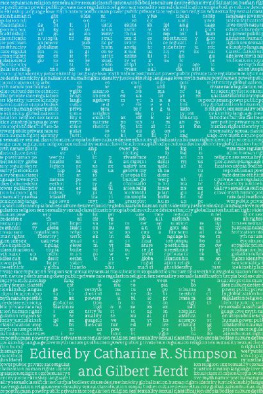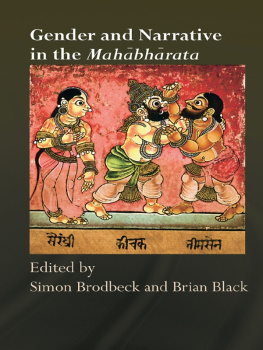The University of Chicago Press, Chicago 60637
The University of Chicago Press, Ltd., London
2014 by The University of Chicago
All rights reserved. Published 2014.
Printed in the United States of America
23 22 21 20 19 18 17 16 15 14 1 2 3 4 5
ISBN-13: 978-0-226-77480-0 (cloth)
ISBN-13: 978-0-226-77481-7 (paper)
ISBN-13: 978-0-226-01021-2 (e-book)
DOI: 10.7208/chicago/9780226010212.001.0001
Lauren Berlants Desire and Love were first published in Desire/Love (Brooklyn: Punctum Books, 2012); portions of Wendy Brown and Joan W. Scotts Power appeared in Power after Foucault by Wendy Brown, in The Oxford Handbook of Political Theory, ed. John S. Dryzek, Bonnie Honig, and Anne Phillips (Oxford: Oxford University Press, 2006); Judith Butlers Regulation was first published as Gender Regulations in Undoing Gender (New York: Routledge, 2004); and Michael Warners Public/Private was first published as Public and Private in Publics and Counterpublics (New York: Zone Books, 2002).
Library of Congress Cataloging-in-Publication Data
Critical terms for the study of gender / edited by Catharine R. Stimpson and Gilbert Herdt.
pages cm
Includes index.
ISBN 978-0-226-77480-0 (cloth : alk. paper)
ISBN 978-0-226-77481-7 (pbk. : alk. paper)
ISBN 978-0-226-01021-2 (e-book)
1. Sex (Psychology)Teminology. 2. Gender identityTerminology. I. Stimpson, Catharine R., 1936 II. Herdt, Gilbert H., 1949
HQ23.C68 2014
305.3dc23
2013043366

This paper meets the requirements of ANSI/NISO Z39.48-1992 (Permanence of Paper).
INTRODUCTION
CATHARINE R. STIMPSON AND GILBERT HERDT
In the late sixteenth century, a young Basque woman, Catalina, was about to take her final vows in a convent in her hometown of San Sebastian when she quarreled with one of the sisters. Feisty, independent, she walked out of the convent and took refuge in a chestnut grove. There she hid until she could restitch her bodice and petticoat into a suit of mens clothes. She also cut her hair, and then left town, initiating a life of adventures and scrapes as a man. In 1603 she reached Peru, one of the Spanish colonies in the Americas. At one point, she was buying wheat, grinding it, and selling it profitably as flour. One Sunday during this period, as she writes in her memoir, having nothing better to do, she played cards with a merchant. After the game, on the way home, the merchant drew his sword, but Catalina pulled out my own blade and we fell to fightingwe parried, but before long I ran him through and down he went (de Erauso 1996, 40). Eventually, our tough, successful fighter reveals the secret of her sex and gender to a young bishop, then reemerges in Peru and Europeas an intact virgin.
The story of CatalinaLa Monja Alfrez, the Lieutenant Nunis rollicking and fascinating in itself. It is also a story about the fluidities of gender, about a young woman who willingly becomes a transvestite and dresses and lives as a man. This volume, Critical Terms for the Study of Gender, is a rich tapestry of ideas that enables us to think about both a historic Catalina and the significance of gender in our contemporary lives.
This introduction has three related purposes. The first is to outline the malleable, changing meanings of the word gender. The second is, briefly, to describe the evolving contemporary study of gender as the organization of sexual difference. Feminism has influenced these explorations, helping to shape perspectives that have been critical, in the senses of the word this volume uses: important, serious, questioning, challenging. The work on gender is growing rapidly. Do a database search on the topic of gender in the Social Sciences Citation Index. Between 1900 and 2002, you will find 47,392 results; between 2002 and November 2012, 91,054nearly twice the previous centurys output in a decade.
The third purpose of the introduction is to point to salient features of this volume. It is a collection of original essays, each of which scrutinizes a key word, a crucial term, in the study of gender. The essays have been written during a time when gender practicesin the United States and elsewhereare as disputatious as the study of gender itself. Some of our contributors have been pioneers in the study of women and gender; all are innovative figures. We are proud that they agreed to write for this volume and grateful to them for their work and independence. They offer a range of ideas and methods, but together their essays demonstrate the centrality of the critical study of gender to our understanding of culture and society. As Gayatri Chakravorty Spivak, a founder of feminist and postcolonial criticism, wrote about her own work, [My] method: gender as a general critical instrument rather than something to be factored into special cases (Spivak 2003, 74). Our focus is on the United States, and inquiry there is our primary platform, but the essays range widely. We hope this book will have cross-cultural resonance and theoretical value.
Changing Meanings of the Word Gender
Until quite recently, many of the people who were interested in gender were students of language who related gender to grammar. Since the 1960s, however, gender has far more commonly referred to the complex ways in which societies and cultures organize and define sexual difference. In this sense, gender systems pervade and regulate human livesin law courts and operating rooms, ballparks and poker clubs, hair-dressing salons and kitchens, classrooms and playgroups, and, for a Catalina, in convents and colonized lands. Because so many different human societies have built their own gender systems, we must speak of diverse genders rather than a monolithic gender. Exactly how gender works varies from culture to culture, and from historical period to historical period, but gender is very rarely not at work. Nor does gender operate in isolation. It is linked to other social structures and sources of identity.
Not surprisingly, the English word gender has a history. It comes from an older French word, gendre, which, in turn, derives from the Latin word genus. The Latin genus has a Greek cognate, genos. Both genus and genos can indicate a race, a breed, or a branch of a family, and each has an accompanying verbin Latin gigno, in Greek gignomaireferring to birth. A second Latin verb, generare, means to beget, to father.
Together, the Greek and Latin sources of gender connote three big, complicated human activities: first, the general trait of classifying people into discrete classes, into one group or another, and then marking each group and assigning it characteristics; second, using language, a primary tool of this trait, to create and maintain sexual classifications, a specific way of marking and characterizing groups; and third, practicing a sexuality that aims to reproduce a family or group, to bring the next generation into being. Each activity reveals an interaction between nature and culture so intricate that rigidly quantifying what is nature and what is culture is a fools task.

 This paper meets the requirements of ANSI/NISO Z39.48-1992 (Permanence of Paper).
This paper meets the requirements of ANSI/NISO Z39.48-1992 (Permanence of Paper).





